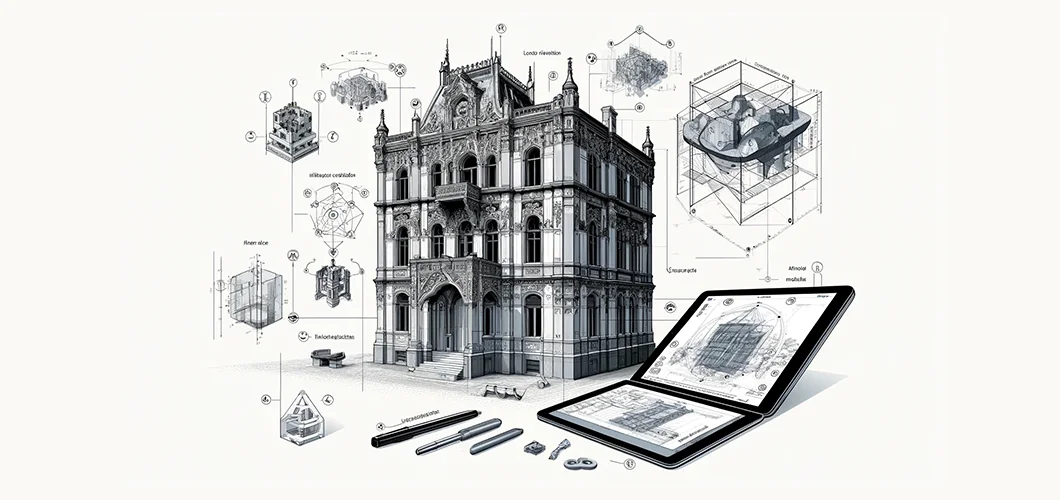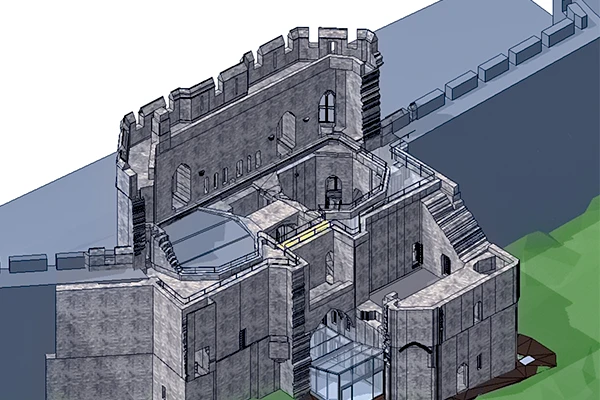
BIM for Heritage Conservation – Documenting Historical Preservation
Heritage preservation is paramount for current and future generations. Many times, government and local bodies are unable to protect the cultural heritage for several reasons. However, with technological advancements, preserving historical structures and artifacts has become more accessible and more manageable.
But what are the tools that help preserve historic buildings and antiquities? Does Building Information Modelling (BIM) help restore and preserve cultural heritage? Let’s find that out together in our blog today!
BIM and History Conservation
Building Information Modelling (BIM) is more than just the digital representation of an area’s physical and functional characteristics. It also extends from the creation of 3D models when it comes to heritage conservation.
For example; when BIM is incorporated into a heritage preservation project, it allows the concerned teams to document the buildings’ data digitally. We must also mention that the captured data is highly intricate and super useful for multiple tasks and sectors.
Let’s talk about how BIM enables users to work towards efficient heritage preservation!
BIM Allows Digital Documentation of Buildings

Digital documentation of buildings is extremely crucial when it comes to heritage preservation. Those documents contain highly detailed data that helps the concerned individuals view and utilize it for multiple purposes.
For example; restoration and reconstruction, maintenance, tourism, etc. One of the benefits of leveraging BIM for heritage preservation is that it allows 3D scanning and modeling of historic buildings. This enables the stakeholders to access accurate and detailed data which wasn’t the case in traditional heritage preservation methods. The conventional methods lacked accuracy and were also time-consuming.
BIM Enables Accurate Preservation Planning
After documenting the heritage structures, the next step is preservation planning. BIM also facilitates this step by allowing the concerned parties to enjoy efficiency and accuracy while working on their projects. We must also mention that once the stakeholders have planned out the preservation steps, they must also analyze the obtained information. They do it by reviewing the structural integrity of the buildings. By doing so, they get to know if the structures are vulnerable or if they are in good condition. If deteriorations are found, then the concerned authorities work towards the restoration step in a strategic manner.
BIM has, no doubt made it super easy for everyone to identify vulnerabilities in structures and then address them through proper channels. These activities are also carried out by making the most of sustainable practices to reduce environmental impact.
BIM Allows Collaboration for Preservation Efforts
Some heritage conservation efforts can be done by smaller groups of people, especially if the project scale is not too big. However, bigger-level, important national structures may require a collaborative effort. This means that local and government bodies need to sit together to work towards heritage conservation of such structures.
Know that we are not just saying that in the context of budgets. But we also want to highlight that buildings that hold high historical or cultural significance require resources that can’t be managed by small groups. So, if a building is of high importance, all the stakeholders need to work together to preserve it.
Allow us to mention that BIM enables collaborative preservation actions. BIM allows the stakeholders to work through seamless coordination and collaboration among various disciplines. By utilizing the central platform for information, everyone ensures that they achieve mutually agreed-upon goals.
BIM Enables Real-Time Monitoring & Maintenance
Now comes the most technical part of heritage preservation through BIM. Let us explain what we mean by that!
Incorporating the software into heritage restoration and preservation projects enables the stakeholders to monitor the structure’s health. BIM uses sensor data and IoT devices, allowing users to get their hands on accurate readings in real-time. The attained data is well-written, highly detailed, and accurate. Once the stakeholders have viewed the data, they can detect several issues that can impact the building.
For example; the stakeholders can identify pest infestation, moisture damage, material degradation, foundation instability, etc. Once such issues have been identified, the concerned authorities work towards their resolution to ensure accurate heritage preservation.
BIM Offers Restoration Scenario Modelling

Although heritage preservation through BIM sounds like an exciting thing to do, a couple of factors must be considered. For example, once restoration efforts have been worked on, the historic buildings may lose their original character. That’s something no stakeholder would want to happen. And that’s when BIM comes into play as it offers restoration scenario modeling. Don’t know what that is? Keep reading the blog to learn more about it!
With restoration scenario modeling, the stakeholders can visualize various scenarios to determine the potential outcomes of their efforts. Such scenarios can involve adding missing building components, restoring damaged exteriors, and recreating architectural elements that may have been lost over time.
Preserving Heritage – The DDC Way
DDC Solutions’ BIM services are aimed at making project delivery more efficient, cost-effective, and environmentally friendly. Our experts craft strategies that shield both the structural integrity and historical authenticity of these sensitive sites while significantly enhancing management and maintenance processes. With our tailored and top-notch solutions, all stakeholders can undertake detailed digital documentation, precise preservation planning, collaborative efforts, real-time monitoring, and insightful restoration scenario modeling.
We are completely UK-based and understand compliance inside out. With DDC, you’ll have a dedicated account manager who will become an extension of your team. To book a free consultation and get a no-obligation quote, contact us here.

2 Responses